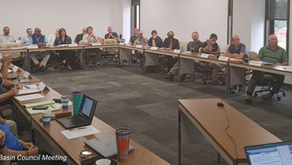How Many Engineers Do Local Governments Need?
- JD Solomon
- Aug 23, 2024
- 3 min read

Why does it take so long to develop a major project in the public sector? Have you ever considered why public-sector capital project delivery can’t keep up with community growth? There are certainly a couple of layers to these questions, but here I'll shed some light on the five project management challenges for local government. More importantly, we’ll give some rules of thumb on how many engineers a local government needs.
What’s an Engineer?
The title "engineer" in the U.S. can refer to a broad range of professionals with varying levels of education, licensure, and responsibility, depending on the industry and specific job role.
A licensed engineer meets specific education, experience, and examination requirements. Licensure is required to practice engineering in many fields where public safety is concerned, such as civil, structural, or electrical engineering. The title "Professional Engineer" (PE) is legally protected.
Technicians, technologists, and inspectors apply engineering principles in practical settings, often working alongside engineers. Where public health and safety is concerned, a licensed professional engineer is legally responsible for reviewing and accepting their work.
What Are the Functions of an Engineering Department?
Planning & Zoning Case Reviews
Engineering departments work alongside city and county Planning & Zoning Departments to review and approve new projects by private developers. In this case, engineers need primary expertise in transportation, stormwater, and public utilities.
Capital Project Design
Designing and permitting new capital projects funded by the unit of local government is a primary responsibility of the engineering department. In some cases, small projects will be performed turnkey by in-house resources. In most cases, projects are designed and permitted by third-party engineers and architects.
Construction Inspections and Administration
The engineering department is responsible for construction inspection and administration for all projects, whether implemented by a private developer or by the local government. Third-party inspectors and construction managers may supplement large projects, but the department remains responsible for the quality of the final product.
Special Initiatives
Stormwater quantity and quality programs usually fall under the engineering department, as do special studies and assessments for new economic development projects. The engineering department also leads special projects like Americans with Disability Act (ADA) compliance, building management, physical security, and disaster recovery.
Engineering Standards
Engineering standards must be updated regularly to reflect changes in building codes, fire codes, state transportation standards, new construction methodologies, and new products.
Engineering Staffing Levels
Many standard sources leave this pivotal question unanswered. The caveats for not having a specific, recommended number are as follows: population size, geographic area, existing infrastructure condition, amount of new growth, system complexity, system automation, and existing staff capabilities. What’s left out is that most local governments don’t have formal work processes.
With all of that said, these are a few rules of thumb:
Total Number of Engineering Staff
The answer is somewhere between 5 and 15 percent of total staff. That’s based on number of people, not payroll. For a town with 200 staff, plus or minus 20 people in the engineering department is about right.
Total Number of Engineers
The rule of thumb is one engineer for every four non-engineer staff (1 in 5 should be an engineer). That means a 20-person engineering staff should include five engineers. Ironically, most engineering departments have five functions (see above).
Engineering Staff for Large Capital Programs
This category is best evaluated on a dollar-volume basis, mainly because it includes many things that may or may not be in the traditional engineering department. In addition to planning, design, & permitting, construction inspection, and construction management, activities like cost and schedule controls, document management, and public involvement should be included. Between 11 and 18 percent of total construction costs should be allocated for engineering functions within a major capital program.
How Many Engineers Does a Local Government Need?
I have provided a few rules of thumb on how many engineers a local government needs. Hopefully, it's apparent that there are five key functions, and by now, you've concluded that most local governments cannot cover all of them. There's a bigger issue related to business processes and workflows and another one related to workforce development (filling out the organization chart will not get us where we need to go). For today, we start with how many people we need.
JD Solomon Inc. provides solutions for program development, asset management, and facilitation at the nexus of facilities, infrastructure, and the environment. Sign up for monthly updates related to our firm.
JD Solomon is the founder of JD Solomon, Inc., the creator of the FINESSE fishbone diagram®, and the co-creator of the SOAP criticality method©. He is the author of Communicating Reliability, Risk & Resiliency to Decision Makers: How to Get Your Boss’s Boss to Understand and Facilitating with FINESSE: A Guide to Successful Business Solutions.




Comentários